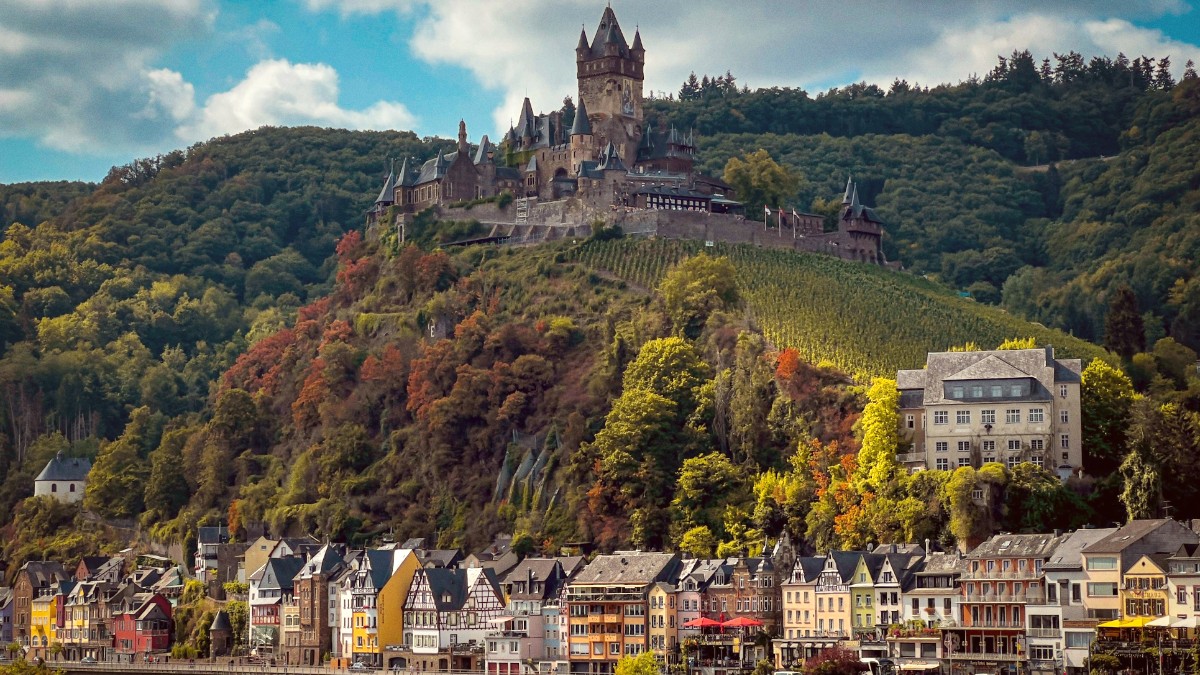
Rhineland Palatinate, Germany
Most town centers and old towns are pedestrian-friendly, often featuring dedicated pedestrian zones where cars are restricted. Cobblestone streets are common. The Rhine Valley boasts numerous scenic walking and hiking trails. Prominent long-distance routes include parts of the Rheinsteig (on the right bank) and the RheinBurgenWeg (on the left bank).
These trails offer spectacular views of the river, castles, and vineyards. Many towns offer guided walking tours focusing on historical aspects or culinary traditions.
Use maps from tourist info centers or navigation apps. Many websites offer downloadable walking routes.
All public areas are generally safe. Exercise caution on narrow roads shared with cars.
Autobahns are strictly off-limits for pedestrians and cyclists.
Day trips from Frankfurt or Cologne, often including boat trips.
Available in Koblenz and Mainz for city highlights.
KD Line provides the main water transport; hop-on/hop-off tickets.
Koblenz (Ehrenbreitstein), Rüdesheim (Niederwald), Boppard (Vierseenblick).
Utilize technology and local knowledge for seamless travel within the Rhine Valley.
FlixBus is the major operator. It connects many cities in and around the Rhine Valley.
Less common for general tourism. Specialized dealers may offer them.
Tuk-tuks or jeepneys are not found in the Rhine Valley.
Deutsche Bahn (DB) operates an extensive and reliable rail network, forming a backbone of travel throughout Germany and the Rhine Valley.
Connects Deutsches Eck with Ehrenbreitstein Fortress.
Sweeping views of Rhine & Moselle.
Transports visitors to the Niederwald Monument.
Views over vineyards and the Rhine.
Ascends to the "Vierseenblick" (Four Lakes View) viewpoint.
Rhine appears to divide into four lakes.
For long-distance bus travel, FlixBus is a primary operator, connecting many cities in and around the Rhine Valley. While often more budget-friendly than trains for longer distances, bus journeys are typically slower.
Consider the Deutsche Bahn (DB) website or the DB Navigator app for all train schedules and bookings within Germany.